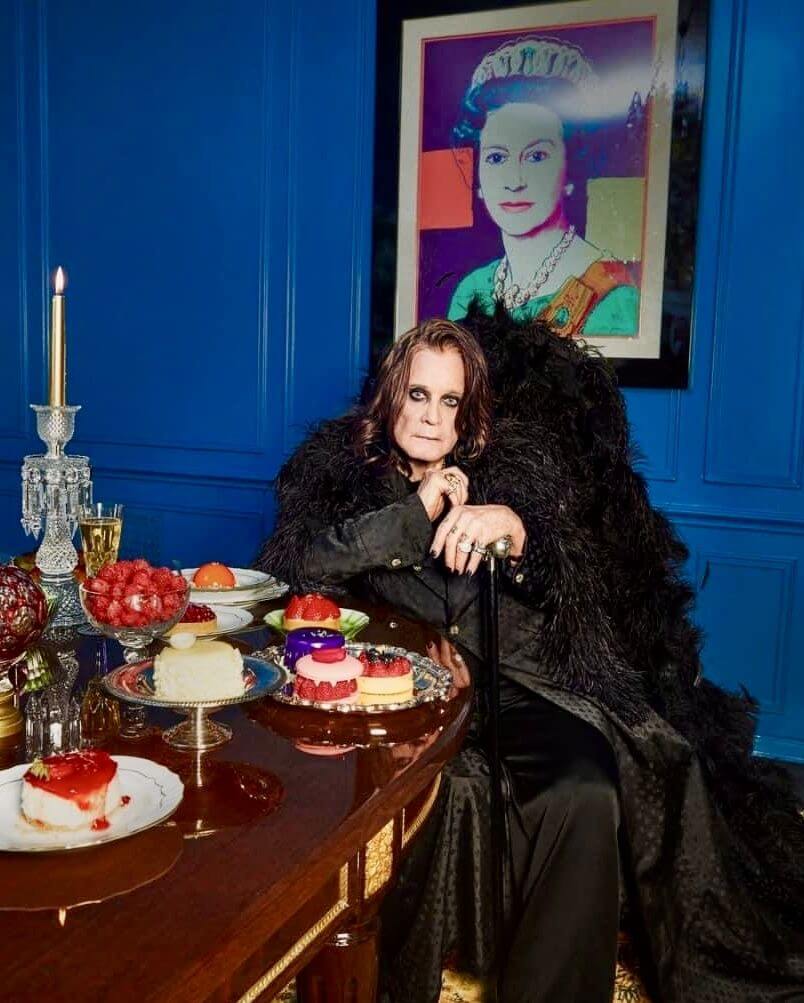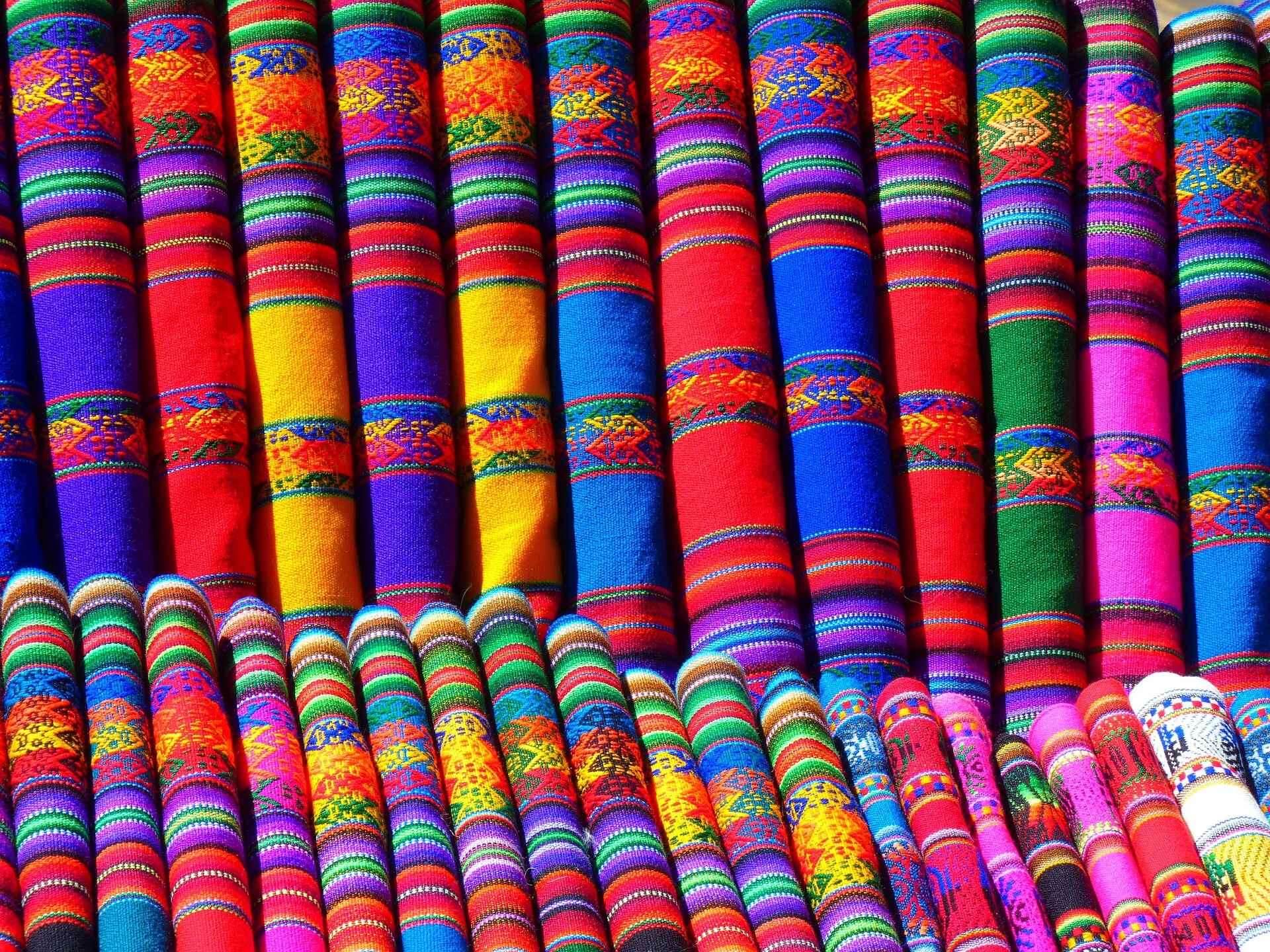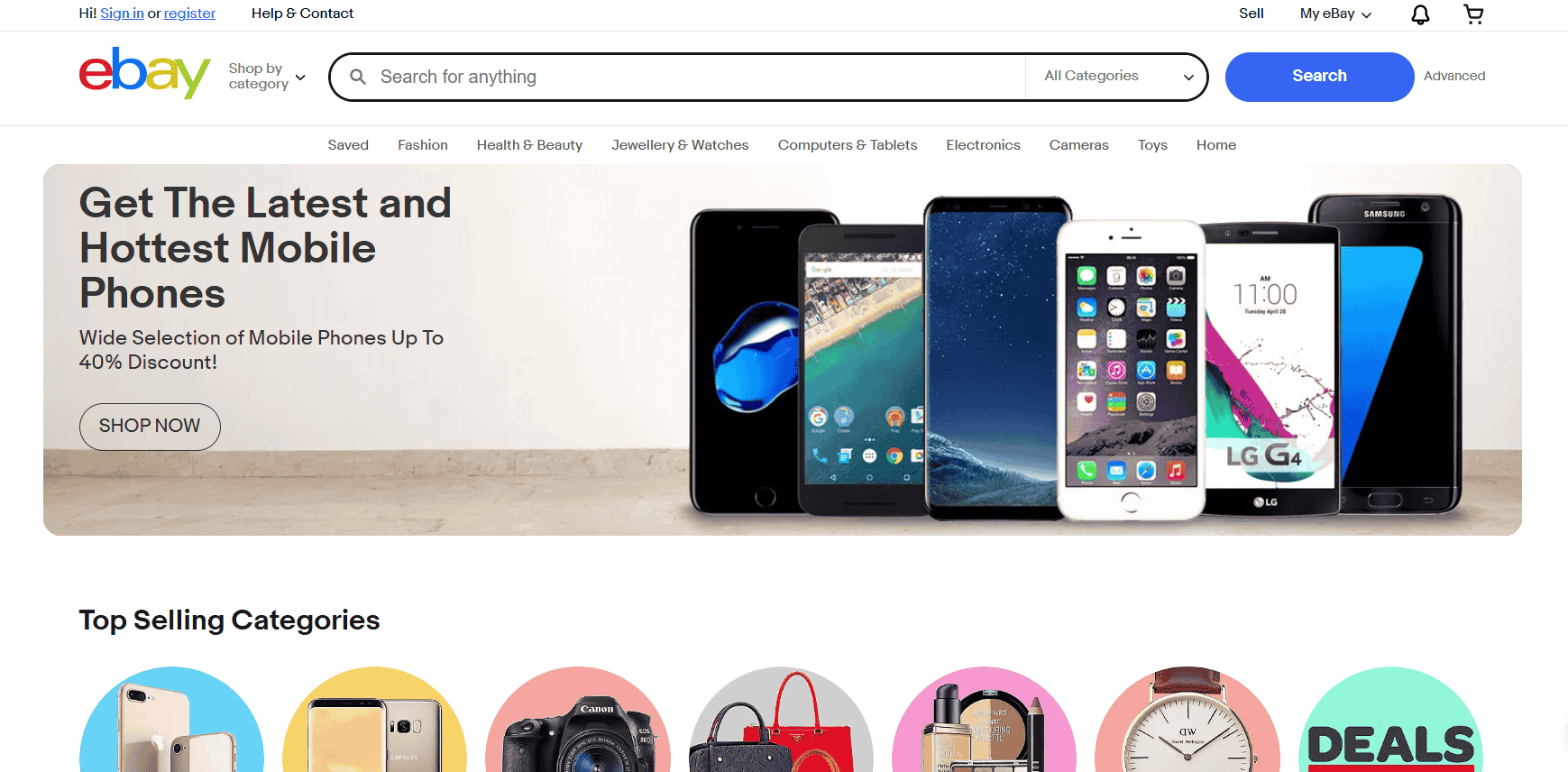Ozzy Osbourne, the Prince of Darkness, built a fortune that outlasted trends, genres, and generations. With a net worth of over $220 million, he’s proof that creating music isn’t the only way to create wealth.
You may know him for Crazy Train, the bat incident, or The Osbournes, but behind the scenes, he’s been running a business empire as chaotic and brilliant as his stage persona.
What most people miss is how sharply calculated that chaos has been. Ozzy figured out early on that fame could pay you once, but a smart brand pays you for life. He turned every shocking headline and public blunder into leverage.
That bat-biting moment? It went viral before “viral” was a thing. Instead of hiding from it, he leaned into it and later used the stunt in album art, merch designs, and stage shows. The money followed.
He also didn’t just show up, perform, and disappear. Ozzy created ecosystems. Albums led to tours, tours sold merch, the media exposure led to TV deals, and those appearances introduced him to people who had never even heard of Paranoid.
-
Ozzy Osbourne turned every public moment—good or bad—into an opportunity to grow his brand and income.
-
Music royalties, licensing deals, and merchandise helped Ozzy earn passive income long after the records stopped spinning.
-
Sharon Osbourne played a major role in building Ozzy’s empire by managing deals, launching Ozzfest, and protecting his image.
-
Ozzy stayed relevant by expanding into reality TV, NFTs, books, and branding while staying true to his heavy metal roots.
-
Entrepreneurs can learn from Ozzy’s approach by owning their story, monetizing their content, and surrounding themselves with the right people.
Every move stacked on the last. At one point, he had his music selling on vinyl, his face on lunchboxes, and his voice on video games, all at the same time.
In my opinion, this is what separates legends from one-hit wonders. I’ve worked with small brand owners who can’t even tell me where their income is coming from.
Ozzy, on the other hand, always had Sharon and a clear strategy: stay visible, stay weird, and cash in on every moment that the world couldn’t stop watching. That’s how you build wealth that keeps multiplying even when the spotlight shifts.
The Rise of Ozzy Osbourne: From Black Sabbath to Solo Stardom
When Black Sabbath dropped their debut album in 1970, Ozzy wasn’t just a frontman. He was the voice of a movement. That first record, eerie and heavy, helped define heavy metal.
With follow-up albums like Paranoid, Master of Reality, and Sabbath Bloody Sabbath, Black Sabbath became a global phenomenon.
The sound was raw, dark, and unapologetically different from the flower-power vibe of the late ’60s. Ozzy’s haunting voice cut through the distortion like a warning siren from another world. People either loved it or feared it.
Either way, they couldn’t ignore it. By the mid-70s, Black Sabbath was filling stadiums, topping charts, and building the kind of fanbase that bought every record on release day.
Then came the fallout in 1979. Ozzy was fired from the very band he helped build. Too unpredictable. Too unstable. Too far gone. To outsiders, it looked like the end. But what followed was one of the most iconic comebacks in music history.
Blizzard of Ozz landed in 1980 and turned everything around. Tracks like Mr. Crowley and Crazy Train proved Ozzy still had the voice and the presence to lead a revolution. The album went multi-platinum, and Randy Rhoads’ guitar work gave his solo career immediate credibility.
What stands out to me is how quickly Ozzy locked back into the momentum. He didn’t waste time reintroducing himself. He hit the road hard, performed relentlessly, and made sure every city he visited left with a stack of merch and a memory. When Zakk Wylde took over the guitar role years later, the legacy continued.
Selling over 100 million albums worldwide is no small feat. That level of output requires talent, consistency, strategy, and stamina. Ozzy built a reputation that could pack arenas in Tokyo, São Paulo, and Chicago without changing his formula.
Every tour, every record, every stage dive added another layer to the financial empire he was building. From being the soundtrack of teenage rebellion in the ’70s to becoming a solo headliner in the ’80s, Ozzy turned setbacks into fuel, and never looked back.
Music Royalties: A Consistent Source of Passive Income
Earning through live shows is one thing, but music royalties are what sustain wealth over decades. Every time Iron Man or Mama, I’m Coming Home plays on Spotify, Ozzy gets paid.
Royalties roll in like clockwork. They keep building even when an artist isn’t touring or releasing new material. For someone like Ozzy Osbourne, whose songs have become part of pop culture, the cash flow never really slows down. He earns royalties from:
- Album sales (physical and digital)
- Streaming services like Spotify, Apple Music, and YouTube
- Licensing his music for film, TV, video games, and commercials
A track like Crazy Train is practically a licensing machine. It’s blasted in sports stadiums, sampled in commercials, and featured in blockbuster video games like Madden NFL. It even popped up in The Office during Dwight Schrute’s air-guitar scene, a moment that went viral and introduced Ozzy’s music to a whole new audience.
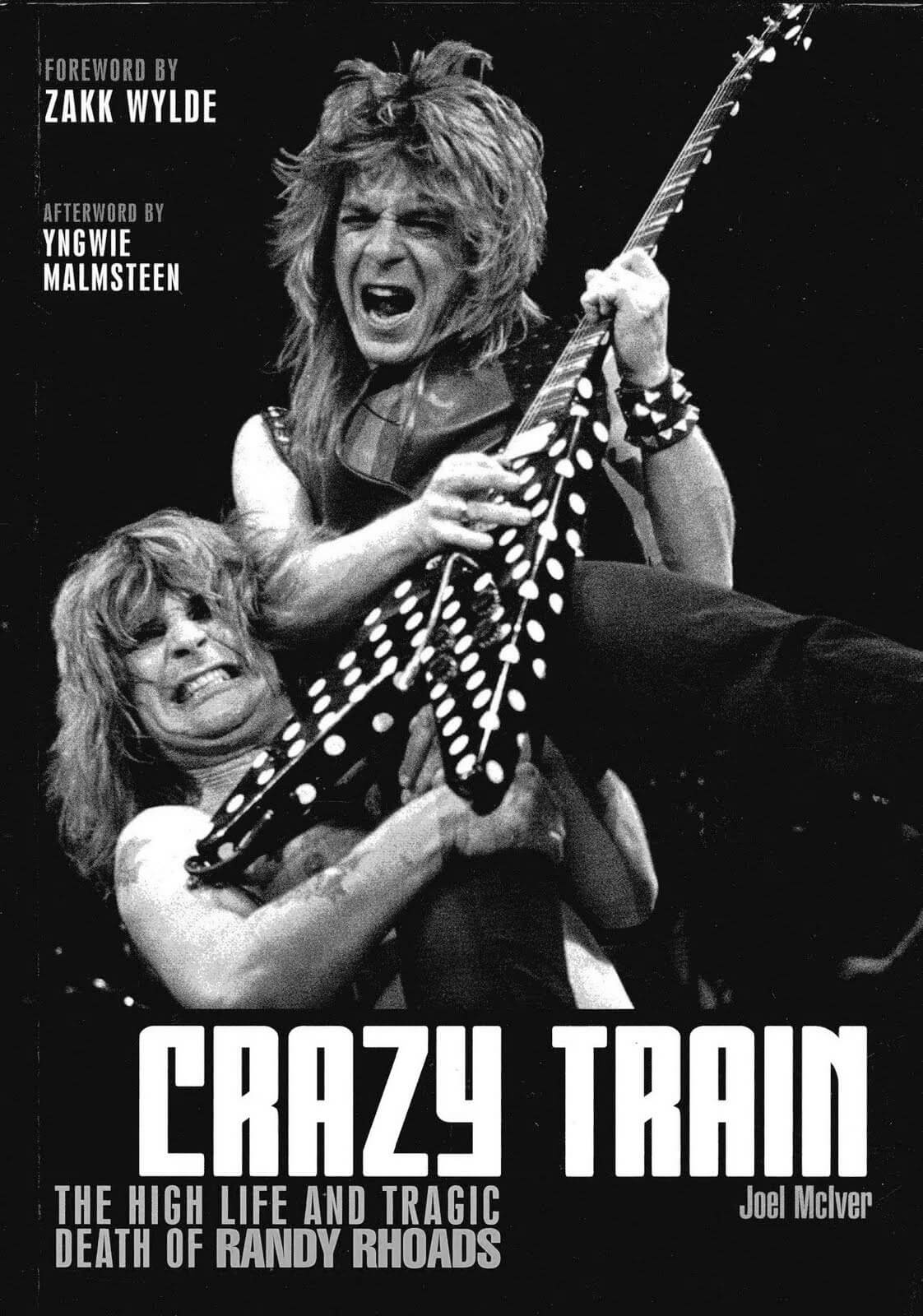
That exposure leads to more plays, more sync deals, and more earnings. I once helped manage royalty projections for a music podcast and saw how one well-placed sync deal could outperform months of streaming revenue. Ozzy’s catalog is loaded with those kinds of placements.
Owning or co-owning publishing rights has made a massive difference. Artists who signed away those rights early in their careers often regret it. Ozzy, with Sharon guiding the business side, kept control over his material. That means he profits every time a network, ad agency, or game developer licenses his music.
Paul McCartney wasn’t exaggerating when he said, “Publishing is where the real money is in music.” For someone like Ozzy Osbourne, music royalties act like a private ATM that pays out year after year, without him needing to lift a mic.
Reality TV Gold: The Osbournes and the Power of Branding
In 2002, The Osbournes changed everything. MTV handed the spotlight to Ozzy’s chaotic household, and it turned into a cultural phenomenon. At its peak, over 7.8 million viewers tuned in weekly, making it one of MTV’s highest-rated shows at the time.
The setup was simple—cameras followed Ozzy, Sharon, Jack, and Kelly through the daily madness of their real life. But it wasn’t staged drama. It was unfiltered, messy, and oddly relatable, even with the rockstar lifestyle in the background. The appeal wasn’t just the celebrity factor—it was the absurdity of watching a heavy metal icon mumble his way through parenting, lose remotes, and argue about dogs pooping on the carpet.
That kind of exposure was priceless. Ozzy went from being the dark, mysterious voice of Black Sabbath to being someone’s favorite TV dad. The show pulled in a younger crowd who hadn’t grown up with Paranoid or Bark at the Moon but now knew Ozzy as the funny, confused guy in fuzzy slippers yelling, “Sharon!”
The business ripple effect was huge. Beyond the $5 million he reportedly earned for the final season, The Osbournes opened the floodgates to new revenue streams:
- Merchandise exploded—shirts, mugs, bobbleheads, and novelty items flew off the shelves.
- Endorsement deals came rolling in, from Pepsi ads to video games.
- Speaking gigs and public appearances became lucrative extensions of his TV fame.
I remember seeing Ozzy-themed Halloween costumes in stores that didn’t even carry his music. That’s when it hit me. He had become a brand, not just an artist.
This kind of cultural crossover is rare. The Osbournes didn’t just pave the way for reality shows like Keeping Up with the Kardashians. It proved that even the loudest, most chaotic lives can be repackaged into entertainment that sells. And in Ozzy’s case, it sold incredibly well.
Businesses He Owns Besides Making Music
Ozzy Osbourne has invested in more than guitars and gold records. Here’s where a significant portion of his wealth comes from:
1. Ozzfest
Ozzfest became its own cultural movement. Sharon Osbourne launched it in 1996 after mainstream festivals wouldn’t book Ozzy. Instead of backing down, she built one from the ground up, and it blew up fast.
By inviting rising stars like Slipknot and System of a Down, and mixing them with veterans like Slayer and Judas Priest, Ozzfest became the destination for metal fans.
At its peak, Ozzfest grossed over $20 million annually, and those figures don’t even account for merchandise, VIP experiences, or brand sponsorships that came with it.
In the early 2000s, I remember friends saving all year just to travel and attend. It wasn’t just about the music. It was a lifestyle event. And Ozzy was always the centerpiece.
2. Merchandise Sales
Ozzy’s merchandising empire has gone beyond the usual band T-shirt. We’re talking action figures, branded tumblers, comic book-style artwork, high-end hoodies, Funko Pop collectibles, and exclusive vinyl pressings that hardcore collectors can’t resist.
Sharon once mentioned in a 2019 interview that their merch brings in millions annually, and that doesn’t surprise me.
When you walk into Hot Topic or scroll through fan sites, Ozzy’s face still pops up. Limited-edition drops and vintage-inspired designs keep old fans buying again and new fans jumping in.
3. Books
His autobiography, I Am Ozzy, landed at #2 on the New York Times Bestseller list. And for good reason—it’s brutally honest, hilarious, and packed with jaw-dropping stories. You’re not just reading about his music career; you’re getting a front-row seat to decades of madness.
Then there’s Trust Me, I’m Dr. Ozzy, where he dishes out bizarre medical advice while poking fun at his own body’s resilience. These books are building another income stream through ongoing royalties, international editions, and audiobook sales.
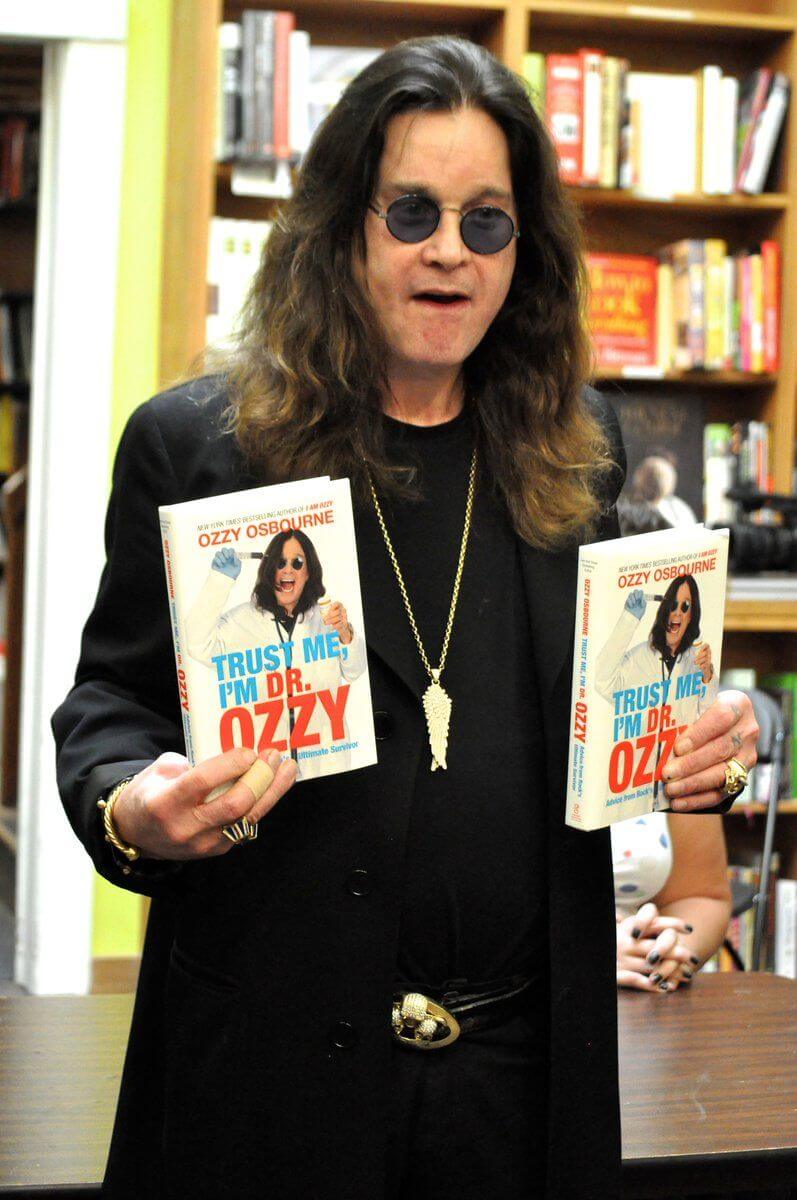
4. Cryptobatz NFT Project
In 2022, Ozzy jumped into Web3 with his Cryptobatz NFT collection. The bat-themed tokens sold out fast, and while the NFT market is unpredictable, Ozzy’s drop made headlines across both tech and entertainment platforms.
The project came with a clever twist: each bat could “bite” another NFT and mutate, creating a hybrid token. That interactive element pulled in collectors and crypto fans alike.
I saw people on Twitter bragging about minting one, not even because they were metalheads, but because Ozzy had entered the blockchain. That kind of crossover reach is rare.
5. Licensing and Branding Collaborations
Ozzy’s face and name have shown up in some unexpected places: limited-edition sneakers, collectible statues, guitar pedals, even slot machines.
He’s teamed up with companies like KnuckleBonz for high-end memorabilia and has been featured in pop culture toys and apparel collections.
You could walk into a boutique sneaker store and see Ozzy-branded kicks next to Travis Scott. You could scroll Amazon and stumble across an Ozzy-scented candle. Every licensing deal puts his brand into new hands, and adds to his revenue stream.
These business moves show that Ozzy Osbourne isn’t just banking on old albums to keep him rich. He’s tapped into experiences, collectibles, and digital trends that stretch across generations. That’s how his empire keeps growing.
The Financial Habits Behind His Fortune
Building wealth like Ozzy Osbourne didn’t happen by accident. Behind the eyeliner and antics lies a series of strategic choices.
Here’s what he did right:
He Trusted the Right People, Especially Sharon Osbourne
He worked with people he trusted, especially Sharon Osbourne, who handled negotiations, bookings, and PR. Sharon was the CEO of Ozzy Inc. She negotiated with TV networks, built Ozzfest from scratch, and knew how to turn even the most chaotic headlines into leverage.
Having someone in your corner who knows your value and isn’t afraid to fight for it can completely change the financial outcome of your career. I’ve seen business owners fail simply because they let the wrong person speak for them. Ozzy didn’t make that mistake.
He Built Multiple Streams of Income
He diversified his income. Ozzy wasn’t content with relying on one revenue stream. He had royalties from albums, ticket sales, merchandise, TV deals, books, NFTs, and brand collaborations all working at once.
Think of it like a band where every instrument brings something different. Ozzy built a setup where money came from everywhere, all the time. That’s what allowed him to stay wealthy even when he wasn’t touring or recording.
He Turned Controversy Into Currency
He protected his brand and leveraged controversy for visibility. Ozzy knew that headlines, even the wild ones, could spark opportunity. Getting banned from cities, biting off a bat’s head, mumbling on TV, each of those moments pulled him deeper into the public eye.
And every time that happened, he sold more albums, booked bigger shows, or dropped a new product. You can either hide from the noise or learn how to turn it into fuel. Ozzy did the latter.
He Found a Way to Monetize Everything
He monetized everything: songs, stories, memorabilia, and even chaos. There wasn’t a moment in his career that didn’t get recycled into something people could buy.
From backstage stories turned into books to stage outfits turned into collectible figures, he understood that every piece of his life had value to someone. And he made it available.
Ozzy never stepped out of the public eye for long. The more people talked about him, positively or negatively, the more money he made.
He mastered what a lot of brands struggle with: staying visible and staying bankable. That’s not luck. That’s deliberate business thinking hidden behind rockstar madness.
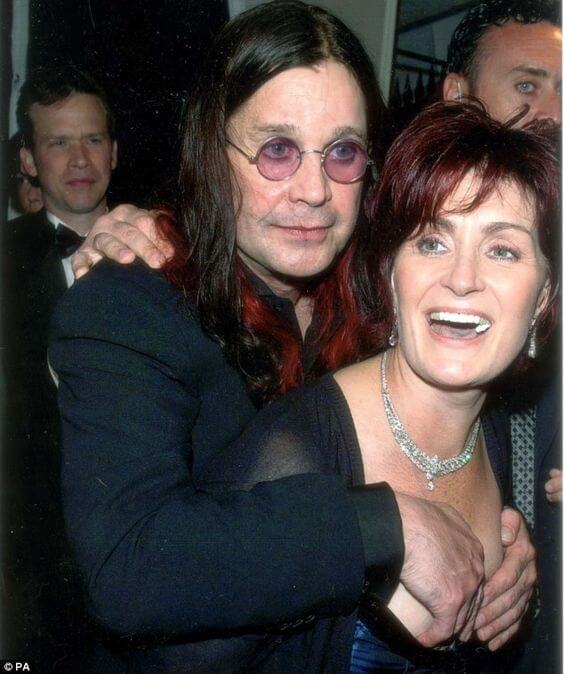
The Role of Sharon Osbourne: Business Backbone Behind the Brand
Sharon Osbourne deserves her own section. She didn’t just revive Ozzy’s career after Black Sabbath fired him. She transformed him into a profitable brand.
When record labels hesitated to fund Ozzy’s solo project, Sharon didn’t wait around for approval. She invested her own money, assembled a talented band, and pushed forward with Blizzard of Ozz.
That album launched his solo career and proved everyone who doubted him wrong. She saw opportunity in the middle of chaos and made sure Ozzy thrived.
When festivals and promoters turned him away, Sharon didn’t beg for slots. She created Ozzfest instead and built one of the most successful touring festivals in heavy metal history.
That move alone reshaped the music festival business. I’ve seen artists today trying to replicate that kind of independence. Sharon did it in the ’90s with grit and zero tolerance for second-best.
Her negotiation skills are legendary. There was a moment when the Rock and Roll Hall of Fame didn’t give Ozzy the respect he deserved, so she pulled him out of the ceremony altogether. She wasn’t looking for a seat at the table. She built a new table and made people come to her.
Ozzy himself once said, “Without Sharon, I’d probably be dead or in jail. She’s the boss.” That’s not a throwaway line. That’s coming from a man who lived hard and nearly lost it all. Sharon stepped in, cleaned up the mess, and turned it into a money-making machine.
Her leadership has kept Ozzy relevant, wealthy, and protected across decades. She knew how to market the madness without letting it take over.
What could’ve ended as a tragic rockstar story became a masterclass in branding, legacy, and fierce business instincts. Behind the Prince of Darkness was always a brilliant businesswoman pulling the right strings.
Key Lessons Business Owners Can Learn from Ozzy Osbourne
Running a business might seem miles apart from being a rock star, but Ozzy Osbourne’s career offers timeless lessons for entrepreneurs like you.
He didn’t build a fortune by luck or gimmicks. He played to his strengths, understood his audience, and protected the value of what he created. You can do the same.
1. Monetise Everything You Create
Ozzy didn’t leave value on the table. From TV rights to T-shirts, every piece of his story became a product. That bat-biting moment? It turned into merch.
That family chaos? It turned into a reality show. He saw the money in moments most people would forget. The same mindset applies to your business. Whether it’s a how-to video, behind-the-scenes footage, or a failed prototype with a story, there’s always a way to turn content into income.
I’ve seen entrepreneurs overlook ideas they thought were “too small.” Those are often the ones that hit hardest with customers.
2. Build a Strong Brand, and Stay On Brand
He leaned into his identity. The bat, the voice, the darkness. It’s all part of the Ozzy experience. You knew what you were getting, and it never felt watered down. That consistency made him memorable.
In business, that kind of clarity builds trust. You don’t have to be outrageous. You just have to be recognisable. The logo, the tone, the message—every detail should feel like you. Ozzy didn’t have a million different looks. He had one iconic look that stuck for 50 years.
3. Work With People Who Know Their Stuff
Sharon brought clarity and control to a chaotic career. She was the difference between being talented and being successful. As a business owner, who you trust matters as much as what you sell.
Whether it’s a co-founder, a manager, or a virtual assistant, the people around you shape your brand. I’ve worked with teams that had the talent but lacked the structure.
It always showed in the results. Ozzy had Sharon. You need your version of that, a person who protects your interests while you focus on your strengths.
4. Stay Relevant
Ozzy keeps entering new arenas—reality TV, NFTs, festivals, books—without losing the core of what made him famous. He didn’t ditch his roots; he extended them into new formats. That’s what relevance looks like.
Whether it’s launching a podcast, updating your social strategy, or testing a new platform, finding new ways to show up matters. Your audience changes. Your market shifts.
But if you stay visible and flexible, your business can grow with them. Ozzy’s audience spans five decades because he never let the spotlight move too far away.
5. Own Your Legacy
Royalties, trademarks, copyrights—these aren’t music industry jargon. They’re long-term income. Ozzy ensured his creations kept paying off decades later. That’s the kind of thinking every entrepreneur should adopt.
Your course materials, your designs, your product names—these things have value. I’ve seen too many creators hand over their rights too early and regret it later.
Ozzy kept ownership in places that mattered. He made sure that every stream, reissue, or licensing deal still paid him, even years after the original release.
There’s nothing mythical about Ozzy’s wealth. He understood the power of his image, his message, and his creations, and he made sure they worked for him. You can do the same with your business. All it takes is vision, ownership, and a little bit of madness.
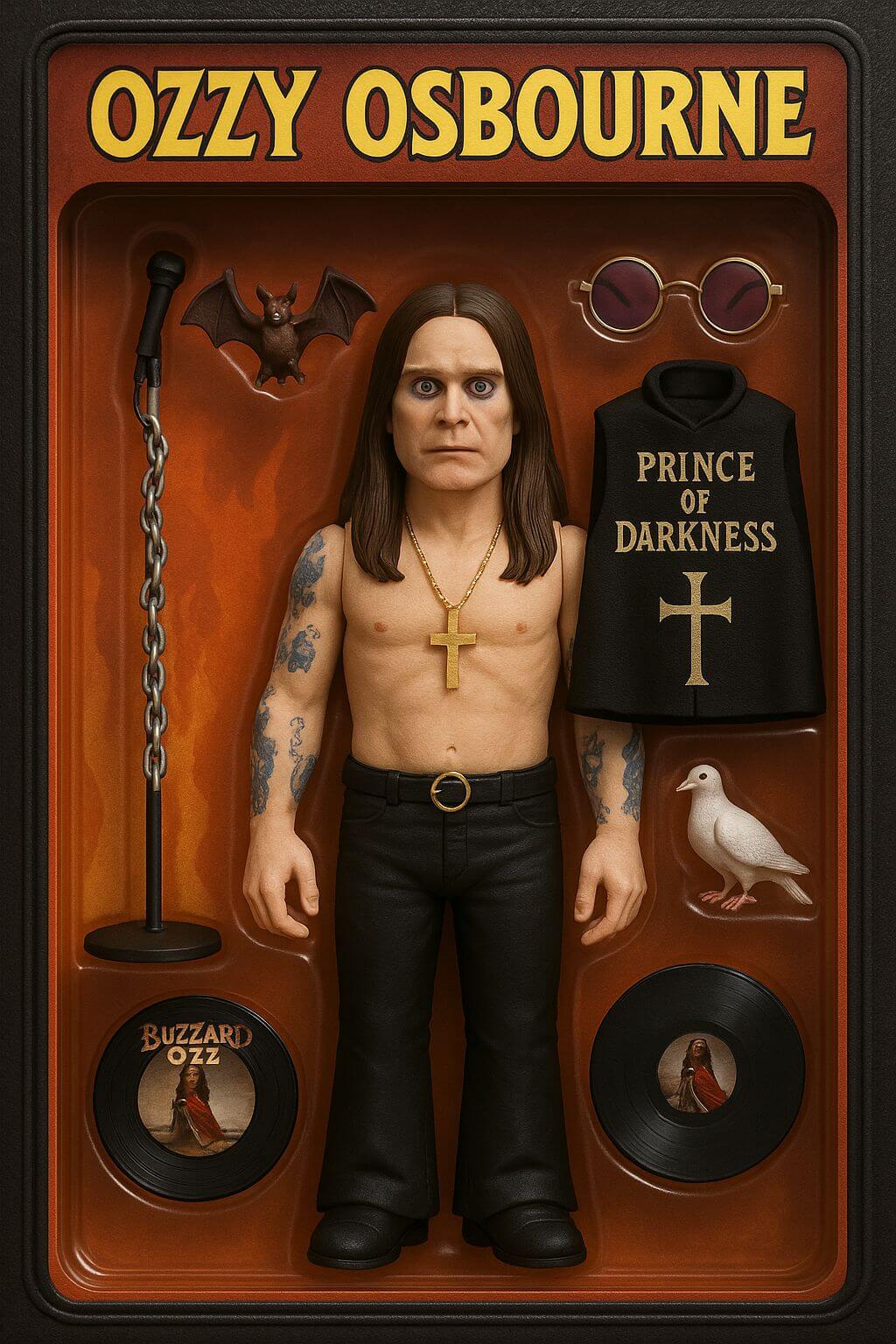
Why Ozzy Osbourne’s Wealth Strategy Works
You can’t fake longevity. Ozzy Osbourne didn’t get rich overnight. He survived addictions, band breakups, and even a reality show that exposed every corner of his messy life.
But he turned every low point into leverage. He knew the world was watching, and he found ways to make that attention profitable. Some artists fall apart under the weight of their own chaos. Ozzy packaged his and made it work for him.
As someone who has worked with small brands and seen how easily they fade from public memory, I believe Ozzy’s greatest skill wasn’t just singing. It has remained valuable in every era. His relevance wasn’t tied to trends.
He moved with them, but never let them erase who he was. He didn’t sit around waiting for a second shot at fame. He created new ones through books, merch, television, festivals, and even NFTs. Each move expanded his reach without watering down his identity.
He made himself unforgettable, not by accident, but by intention. There was always a new product, a new collaboration, or a new headline that kept his name moving through media and markets. He stayed in the public conversation and made sure that attention turned into income.
Most business owners I’ve met could learn something from that kind of clarity. You don’t need to bite a bat’s head off, but you do need to own who you are and find smart ways to sell it.
That’s what builds real value. That’s what builds a brand people remember. It takes guts to market your story the way Ozzy did. It takes confidence to lean into your flaws and turn them into features.
That’s how you build a fortune, and keep it. Ozzy did. And he’s still doing it.

